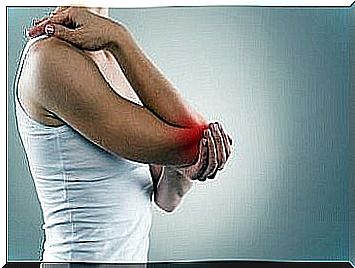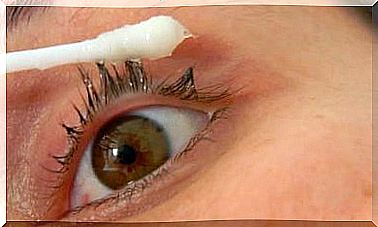What Is A Dislocation? How Does The Body React?
Dislocations are formed when the bones that make up a joint separate. Sometimes they lead to complications, so they must be treated urgently.

Many wonder what a dislocation is and how it differs from other types of injuries. The most concrete answer would be to say that in medicine a dislocation is equivalent to a “dislocation”.
A dislocation is the separation of the bones that occurs in a joint. Thus, the bone loses its normal position.
In other words, a dislocation involves the permanent separation of the two parts that make up a joint. What is separated are the ends of two bones that are connected to each other.
It basically occurs when excessive force is applied to a ligament.
Now that we know what a dislocation is, it is convenient to note that it is a very painful injury. It is usually caused by a fall or trauma, during the practice of a sport or physical activity, or outside of these.
In principle they do not pose an imminent life risk. However, they do need to be treated quickly, as complications could arise.
What is a dislocation and what types of dislocations exist

Before going on to describe in detail what a dislocation is, it is important to remember a few points.
Joints are the union of bones and other elements such as muscles and ligaments. Its main function is to allow movement. They are like “hinges” that make mobility possible.
In a normal joint, the bones fit together perfectly. When a dislocation occurs, the bones separate and do not return to their normal position.
Now, depending on the joint where it originates, a basic classification appears. The most common include: shoulder, hip, knee, ankle, elbow and back.
In turn, depending on the level of severity, they are classified as complete or partial dislocations. The first are those in which there is permanent separation of the bones. The second, also called subluxations, are those in which the bones separate, but return to their place.
Similarly, depending on the cause that produces them and the evolution they present, dislocations can be classified as:
- Traumatic. They are those caused by direct or indirect trauma.
- Complicated. When they also include a vascular, nervous or other type of injury.
- Pathological. They are those that take place in a joint that has a previous pathology, such as infections, tumors or bone or neuromuscular problems.
- Congenital. When they are present from the moment of birth.
- Recurrent or iterative. Those that appear with minimal injury, in a joint that had previously suffered a dislocation.
Symptoms and diagnosis

One of the main difficulties in establishing the diagnosis is the similarity that dislocations have with fractures. The symptoms are basically the same and these include:
- Sharp pain, sometimes accompanied by numbness and a tingling sensation.
- Deformation that is captured with the naked eye.
- Inflammation or violet discoloration.
- Impossibility of making movements. In children or the elderly, this is often the most visible symptom, especially when it comes to a temporary dislocation or subluxation.
In all cases it is an emergency that must be attended to immediately by a doctor. It is advisable not to move the patient.
Usually, the healthcare professional conducts an interview to determine how the injury occurred. He will then examine the affected part to determine if it is a dislocation or a fracture. Most likely, he will order X-rays and sometimes MRI or CT scan.
Complications and prognosis

It is important to note that it is not enough to know what a dislocation is, or to understand that it is a medical emergency.
It is also critical to understand that this is an injury that can present very serious complications. The most important are derived from the fact that the trauma could have reached the structures near the joint.
The main complications are :
- Tears Dislocation may be accompanied by tears in the muscles, ligaments, and tendons that accompany the compromised joint.
- Damage to blood vessels or nerves near the joint.
- Predisposition to suffer posterior dislocations in the same joint.
- Development of arthritis in the injured joint, especially over the years.
Usually, with proper care, a dislocation can heal in 2 to 6 weeks.
However, if complications do occur, surgery may be necessary to repair the damage.
As additional information, it is worth noting that dislocations can also occur in the lens of the eye and in the teeth.









